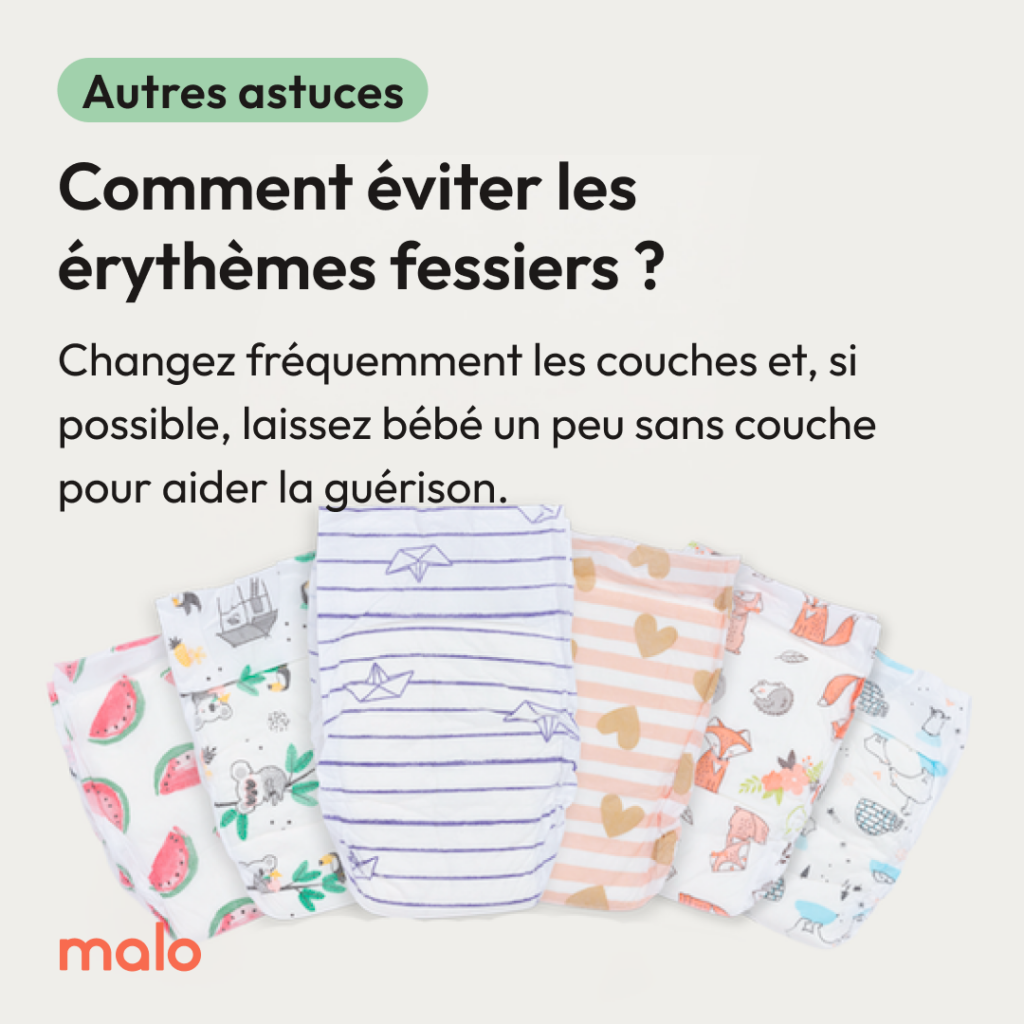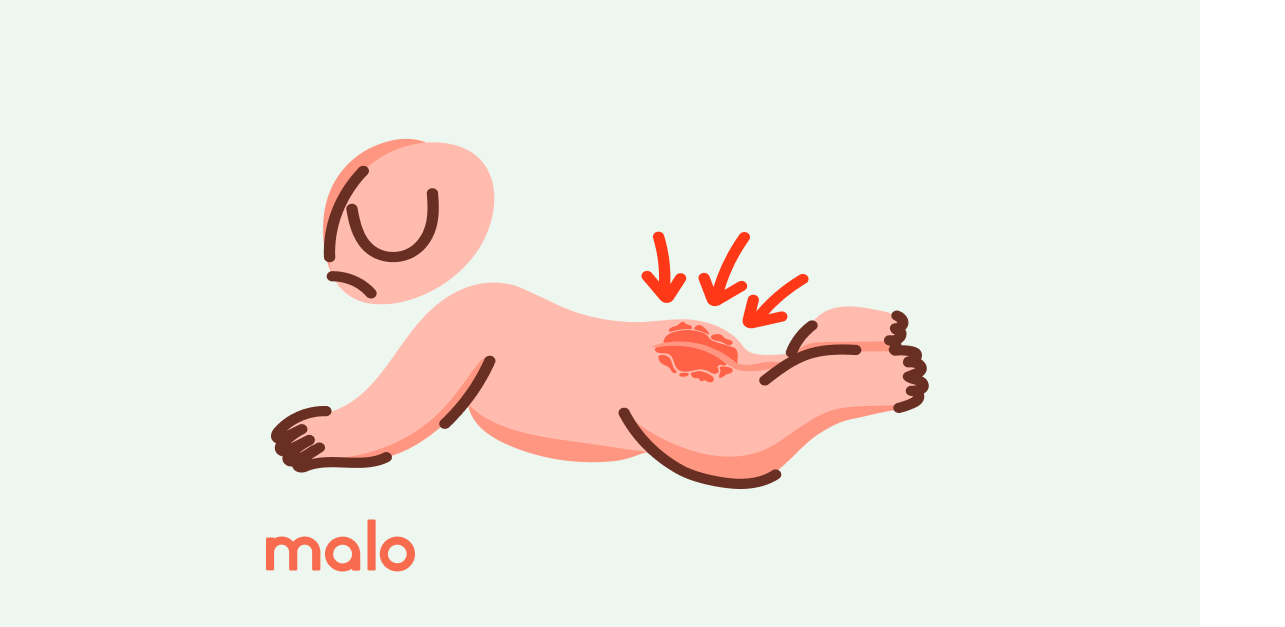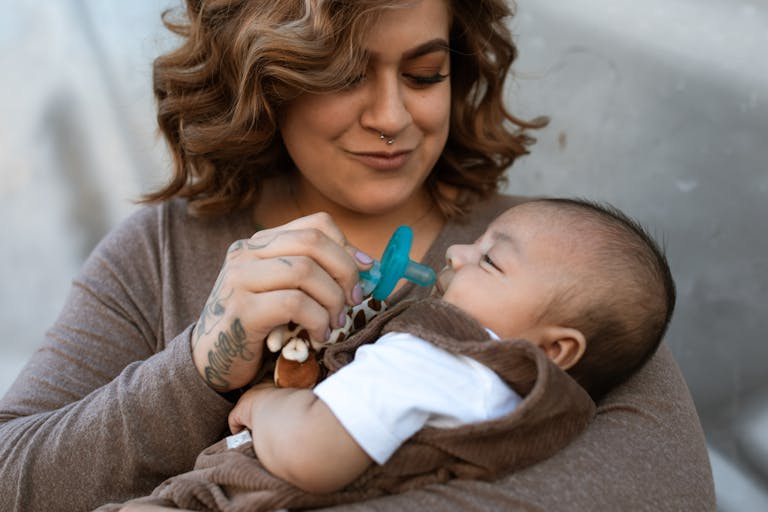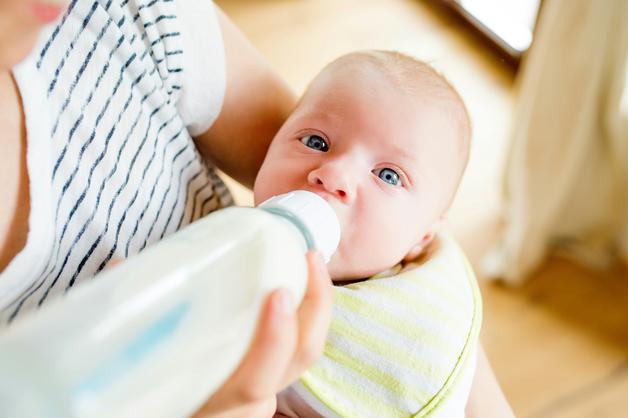You’ve carefully selected each diaper, wiped gently, fussed over bath temperatures, and then—suddenly, an angry red rash appears, transforming ordinary routines into worrisome moments filled with tears and questions. Diaper rash. For parents, just reading the phrase can trigger the memory of a restless night or the sting of seeing their baby uncomfortable. Why does this happen even with all the right precautions? What quiet processes are unfolding beneath those soft baby wipes and those carefully chosen diapers? This condition, while overwhelmingly common, often feels like a curveball in the daily marathon of care. Understanding the whys and hows helps lift the veil of uncertainty: recognizing triggers, distinguishing signs, applying evidence-based care, and—perhaps most empowering—knowing when to seek extra help. Here’s what every parent deserves to know, right from the science to the small strategies that can make a world of difference.
What is diaper rash? Understanding a pervasive condition
Diaper rash, sometimes called irritant diaper dermatitis, refers to inflammation and visible skin changes—think splotchy redness, discomfort, or even peeling—concentrated on areas covered by the diaper. What brings on this sudden irritation? A combination of moisture retention, urine acidity, and friction set the stage, disrupting that delicate skin barrier so unique to babies and those with sensitive skin. Infants, toddlers, and even adults using incontinence products are at risk; no age corner is truly spared.
But let’s pause—does diaper rash always mean someone’s hygiene fell short? Absolutely not. Even with meticulous attention, the reality is that a baby’s skin is thinner and less mature than an adult’s, making it highly susceptible. Over 50% of children between 4 and 15 months will encounter diaper rash at least once, and for adults with mobility challenges, it’s equally relevant.
Why does understanding diaper rash matter so much? The answer isn’t just medical—comfort, routine, and emotional harmony for the family are all at stake. When babies cry out during a diaper change or refuse to settle, the entire household rhythm can tip into chaos. Early recognition and gentle, evidence-backed intervention not only soothe the skin but help restore calm for everyone involved.
What triggers diaper rash? Decoding the causes
Prolonged contact with moisture: The biochemical troublemaker
Picture the microclimate inside a diaper—a humid, sometimes acidic environment saturated with urine and feces. The interaction of these substances leads to increased skin pH, which, combined with enzymes from stools, can quickly degrade the protective acid mantle meant to guard the skin. Once that barrier is weakened, even a brief exposure can start a cascade of irritation and inflammation.
Friction and the unique vulnerability of baby skin
A snug diaper, persistent rubbing, and repeated wiping—day in, day out. Friction like this, especially when coupled with immature skin structure, undermines the epidermal defenses. Babies, with their immature stratum corneum (the skin’s outer layer), are like tiny test tubes demonstrating just how sensitive developing skin can be to even gentle mechanical stress.
External irritants: Wipes, soaps, detergents, and more
Scented wipes, alcohol-based cleaners, and detergents loaded with additives—each of these can tip the balance from normal skin to irritable, inflamed tissue. Even some baby creams contain potential allergens or unnecessary chemicals. For parents, navigating this sea of options can be overwhelming, but the mantra is simple: fragrance-free, hypoallergenic, minimal ingredient lists are your friends.
Infections: When bacteria and yeast take advantage
Once skin integrity is disrupted, secondary infections often step in. Candida albicans, a common yeast, flourishes in moist folds, presenting as a bright red rash with characteristic satellite lesions—tiny spots just outside the main inflamed area. Bacterial invaders, especially Staphylococcus aureus or Streptococcus pyogenes, may create yellow crusts or rapidly spreading redness, demanding prompt, targeted treatment.
Allergies, food shifts, antibiotics, and teething
Sometimes, diaper rash is a silent messenger, hinting at bigger changes. Starting solids? The altering composition and acidity of stools can spike irritation. Is your child on antibiotics? Disrupted gut microbiota plus diarrhea can pave the way for yeast overgrowth. Teething is another notorious phase—saliva changes digestion, and suddenly, diapers become a hotspot for irritation, even when nothing else has changed.
Special groups: Cloth vs. disposable, premature babies, and adults
Cloth diapers, praised for being chemical-free, do require more frequent changes and careful laundering—a detail easily missed in the laundry-laden days after birth. Disposable diapers with superabsorbent gels can help manage moisture, but occasionally even these can be part of the irritation cycle, especially for those with extra-sensitive skin. Preterm infants have especially fragile skin, more permeable and less resistant. Adults with incontinence—particularly those with reduced independence—face risks that echo infant vulnerabilities, compounded by different hygiene and medical needs.
How does diaper rash appear? Recognizing the types
Typical symptoms: Redness, pain, and peeling skin
The elephant in the nursery: fiery red skin, sometimes merging into raw patches, with the rash usually sparing deep skin folds and creases. Mild discomfort may quickly escalate into persistent crying, especially during cleaning or diaper changes.
Blisters, weeping sores, yellow crusts—these paint a picture of more advanced irritation and the possible presence of either bacterial or yeast infection.
Irritant diaper dermatitis
By far the most common. Think large, flat areas of redness, primarily over convex surfaces—the buttocks, genital region, thighs—while the inner groin folds look nearly untouched. This distribution pattern is an important clue for parents and clinicians alike.
Yeast (Candida) rash: The signature features
Bright, sharply outlined red patches that invade the skin folds, often after a bout of antibiotics or a stubborn irritant rash that just won’t leave. Those satellite papules, tiny dots marching away from the main rash, are the yeast infection’s calling card. Standard barrier creams? Not enough here; topical antifungals become essential allies.
Bacterial infections: When to worry
Yellowish, honey-colored crusts, weeping lesions, sudden increases in pain or discomfort, and rapidly spreading redness are red flags. These signs usually point to bacterial colonization requiring medical assessment and possibly a switch to topical antibiotics.
Allergic reactions and less common causes
Itchy, sharply defined. The rash appears wherever the skin faces a specific ingredient—be it dye in diapers, preservative in wipes, or leftover detergent. Rarely, other conditions like seborrheic dermatitis (think greasy scales), psoriasis, or even acrodermatitis enteropathica (zinc deficiency-linked) may masquerade as diaper rash.
Telling rashes apart: At a glance
- Eczema typically skips the diaper area.
- Yeast? Invades folds with satellite lesions.
- Bacterial: look for crusts and fast progression.
Careful observation of location, shape, and evolution over time are invaluable in supporting tailored care.
Risk factors: Who faces the highest risk—and why?
- Developmental stage: Infants between 9 and 12 months, with maturing but still delicate skin, top the risk charts.
- Diaper routines: Lengthy exposure to wet diapers, less frequent changes, or aggressive cleaning after every bowel movement can backfire.
- Dietary changes and medicine: New foods often mean new stool chemistry. Antibiotics and the resultant diarrhea tip the scales toward both rash and infection.
- Tight, poorly ventilated diapers: Blocking airflow and trapping moisture may promote rash and discomfort.
- Inherited skin sensitivity or pre-existing conditions: Babies coping with eczema or seborrheic dermatitis often heal more slowly, adding another layer of challenge.
Prevention strategies and daily routines
Frequent changes and gentle hygiene
The cornerstone. Change diapers at the first sign of wetness, aiming for at least every two hours. Gently clean with warm water and a soft cloth, reserving wipes for when necessary. Never scrub—gentle patting preserves the fragile microbiome and integrity of infant skin.
Barrier creams: The unsung heroes
A thick application of zinc oxide or petroleum jelly (petrolatum) at every change creates a physical shield, locking out irritants and locking in moisture balance. No fancy additives required—simple, time-tested ingredients perform the best.
The right products: Hypoallergenic and breathable
Opt for hypoallergenic, fragrance-free wipes and diapers. Consider highly absorbent disposables in times of frequent stooling, and for cloth diaper aficionados, dedicate extra rinses to remove even the tiniest traces of detergent.
Let the skin breathe: Diaper-free time
Whenever you can, give skin access to the open air. Even a few minutes after every change can shift the odds in favor of faster healing.
Special routines for cloth diaper users
Cloth is wonderfully reusable, but less absorbent. Frequent changes become the rule, and fabric softeners—tempting for softness—can leave residues that irritate sensitive skin.
Hygiene in communal care settings
Clear, written routines for daycares or nurseries make all the difference: labeled creams, frequent changes, and staff who know exactly which baby needs what type of attention.
Relieving diaper rash: Practical steps and medical supports
- Barrier creams: Always reach for zinc oxide or petrolatum first.
- Natural remedies: Some families report modest improvements with shea butter, green clay, or even a touch of breast milk (for its natural antibodies), but medical creams have the most supporting data.
- Choose gentle wipes: Avoid alcohol, fragrance, and harsh chemicals whenever possible.
- Gentle drying: Pat dry—never rub. Micro-tears from wiping can worsen the rash.
Medical treatments
Not all diaper rash requires prescriptions, but if things escalate—blisters, oozing, severe pain, spreading redness, or no improvement within several days—call on a healthcare professional’s expertise. They may suggest:
- Topical antifungals for candidal or yeast rashes.
- Topical antibiotics for bacterial superinfections.
- Short courses of low-potency corticosteroids, if significant inflammation exists (under strict supervision only).
Special populations—newborns, premature infants, children with complex medical needs—demand even gentler care and, at times, more rapid professional involvement.
Care for adults and elderly
Frequent changes. Products engineered to wick away moisture. Routine monitoring for early rashes, with prompt escalation for any signs of secondary infection.
Myths, facts, and the science of care
- Avoid powders—talc and cornstarch are associated with respiratory risks if inhaled and may worsen infections.
- While breast milk has limited antimicrobial benefit, zinc oxide and petrolatum consistently outperform in rigorous studies.
- Not every “natural” product is safe or beneficial—some may cause further irritation.
- Parents often debate cloth vs. disposable; neither prevents diaper rash absolutely—hygiene and frequent changes matter most.
- The modern focus sits on gentle cleansing, robust barrier application, and air exposure.
Lifestyle adjustments and practical strategies
- Select loose, well-ventilated clothing to allow for airflow and reduce friction.
- Consider upsizing diapers if needed to minimize rubbing.
- Label creams and communicate with all caregivers, especially when routines span multiple settings.
- Prioritize dialogue—early recognition and consistent routines are parental superpowers.
Key takeaways
- Diaper rash is astonishingly common, spanning babies, toddlers, and adults, yet the solutions often lie in the details: frequent changes, gentle cleaning, appropriate barrier cream use, and embracing diaper-free moments.
- Not all redness signals poor hygiene; sensitive, developing skin needs consistent, evidence-based care.
- Watch closely for signs of secondary infection and don’t hesitate to seek a medical opinion if rashes persist, worsen, or present with alarming features.
- Customization is key—choose routines and products that best fit your child’s or loved one’s needs, and rest assured that both cloth and disposable options are safe when used properly.
- There is a wide array of supports out there, and parents never have to tackle these questions in isolation. For more tailored advice and free pediatric health questionnaires, you can download the Heloa App for supportive insights any time you need them.
Empowered knowledge and a dash of parental intuition—a potent combination for soothing skin and spirits alike.
Questions Parents Ask
How can you quickly relieve diaper rash pain at home?
It’s natural to want to soothe your child’s discomfort as soon as possible. For quick relief, you can gently cleanse the skin with lukewarm water and avoid rubbing; simply pat the area dry. Allowing your baby some diaper-free time can help speed up healing—fresh air is a gentle ally. You might also try applying a thick layer of unscented barrier cream, such as zinc oxide or petroleum jelly, which protects the area from moisture and irritants. Rassurez-vous, these home measures are often effective to bring comfort, but if the pain remains intense or you notice any signs of infection, it is important to speak with a healthcare professional.
Can diaper rash develop even if you change diapers regularly?
Yes, it’s entirely possible. Even with frequent changes and a diligent hygiene routine, diaper rash can still appear. Some babies have extra-sensitive skin or may react to certain wipes, creams, or detergents. Teething, changes in diet, or antibiotic use can also disrupt the skin’s balance and lead to irritation. Remember, experiencing diaper rash is very common and doesn’t reflect on the quality of your care. Sometimes, despite all your efforts, a mild rash can develop—what matters is being attentive and adapting routines as needed.
What are the different types of diaper rash?
Several types of diaper rash exist, each with its own specific signs. The most common is irritant diaper rash, caused by contact with moisture, urine, or stool. Yeast (fungal) diaper rash can develop after antibiotics or when a regular rash doesn’t heal, often showing distinct red borders and spots. Bacterial diaper rash, though less common, may present with yellowish crusts or swelling. Noticing the specific look of the rash can help guide care and, if necessary, prompt a discussion with your healthcare professional. Each type has its own preferred approach for healing, and your attention makes a real difference.

Further reading:









